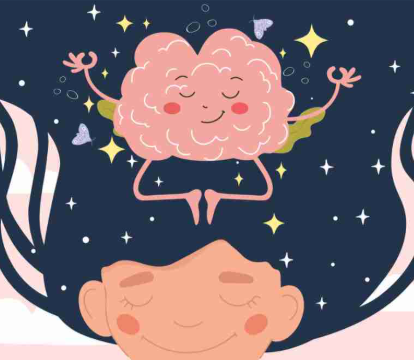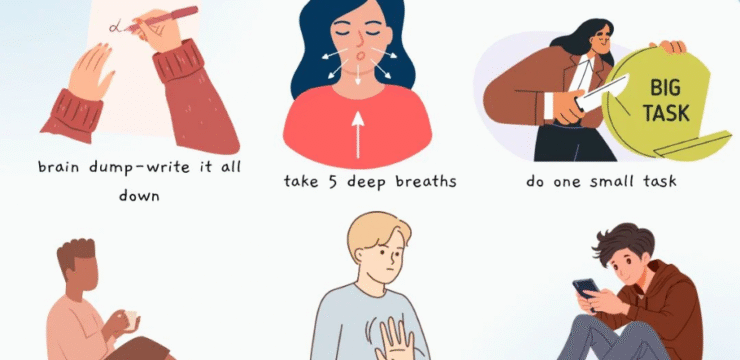There’s nothing more frustrating than lying in bed, staring at the ceiling, and feeling your body restless while your mind races. Tossing and turning at night can leave you exhausted, irritable, and struggling to function the next day. Fortunately, there are practical strategies to help you calm your body and mind, paving the way for a night of uninterrupted sleep.
Understanding why tossing and turning happens is the first step toward solving it. Often, it’s not just a matter of being tired. Factors like stress, anxiety, inconsistent sleep schedules, diet, and even the bedroom environment can all play a role. When your mind is active or your body is uncomfortable, your natural sleep rhythm gets disrupted, leading to constant shifting and turning. By addressing both the mental and physical aspects of sleep, you can create the conditions your body needs to rest deeply.
One of the most effective ways to reduce tossing and turning is by establishing a consistent sleep routine. Going to bed and waking up at the same time each day helps regulate your internal body clock, making it easier to fall asleep and stay asleep. Even on weekends or days off, keeping your sleep schedule consistent signals to your body that it’s time to rest, reducing nighttime restlessness.
Creating a bedtime ritual can also help signal to your body that sleep is approaching. Activities like taking a warm shower, reading a calm book, or listening to soft music can create a sense of routine and relaxation. Avoid screens, such as phones, tablets, or televisions, at least an hour before bed. The blue light emitted from these devices can interfere with melatonin production, the hormone that regulates sleep, making it harder for your body to settle.
The sleep environment itself plays a crucial role in minimizing tossing and turning. Your bedroom should feel inviting, calm, and comfortable. Temperature is important; a slightly cool room is often ideal, as it can help lower your body temperature to promote deeper sleep. Invest in a quality mattress and pillows that support your preferred sleeping position. If your bed is too firm, too soft, or uneven, your body may struggle to find a comfortable position, leading to frequent movement throughout the night.
Reducing external disturbances is equally important. Consider using blackout curtains to block out light and, if needed, white noise machines to mask sounds that could wake you. Eliminating these environmental stressors allows your body to relax fully and stay in a restful state.
Nutrition and hydration can also influence how much you toss and turn. Heavy meals, caffeine, and alcohol close to bedtime can all disrupt sleep patterns. While it may seem counterintuitive, alcohol can cause you to wake up more frequently during the night, and caffeine can linger in your system for hours, making it harder to fall asleep initially. Opt for light, balanced snacks if you’re hungry before bed, and aim to limit fluid intake to prevent waking up to use the bathroom.
Exercise is another key factor that can improve sleep quality. Regular physical activity helps regulate your sleep-wake cycle and reduces anxiety, but timing matters. Exercising too close to bedtime can actually make it harder to fall asleep, so aim to complete workouts at least a few hours before you plan to go to bed. Gentle stretching or yoga in the evening, however, can be calming and help release tension in your muscles, making it easier to settle into bed.
Managing stress and racing thoughts is essential for preventing restlessness at night. If your mind is buzzing with worries, it’s natural for your body to mirror that activity. Mindfulness techniques, meditation, or simple breathing exercises can help quiet your mind. For example, focusing on slow, deep breaths while imagining a relaxing scene can calm both mental and physical tension. Journaling before bed to note down your thoughts can also help offload worries, creating a sense of closure before sleep.
Sometimes, tossing and turning is linked to more specific sleep issues like insomnia, sleep apnea, or restless leg syndrome. If you consistently struggle despite trying these strategies, it may be worth consulting a healthcare professional. They can help identify underlying issues and provide targeted solutions, from behavioral techniques to medical treatment, ensuring that your sleep becomes restorative rather than frustrating.
It’s also worth considering the power of naps during the day. While short naps can be refreshing, long or late-day naps can interfere with nighttime sleep, making it harder for your body to settle when bedtime comes. Keeping naps brief and earlier in the day helps maintain a strong sleep drive for the night.
Even small adjustments can make a noticeable difference. Something as simple as changing your pillow arrangement, adjusting room temperature, or dimming the lights slightly earlier can signal to your body that it’s time to wind down. These little cues accumulate to create a stronger association between your bedroom and sleep, reducing the likelihood of tossing and turning.
Finally, patience is key. Improving sleep takes consistency. Your body may need time to adapt to new routines, environments, and habits. Celebrate small improvements, like falling asleep slightly faster or waking up fewer times during the night. Over time, these small victories will add up to a significant reduction in nighttime restlessness, leaving you refreshed and energized.
Stopping tossing and turning is about more than just lying still; it’s about creating the right conditions mentally, physically, and environmentally for deep, restorative sleep. By understanding the factors that disrupt rest, establishing calming bedtime routines, optimizing your bedroom, managing stress, and making smart lifestyle choices, you can transform restless nights into peaceful, uninterrupted sleep. Remember, every step you take toward better sleep is a step toward better overall health and well-being. With dedication and consistency, the nights of endless tossing and turning can become a thing of the past.






